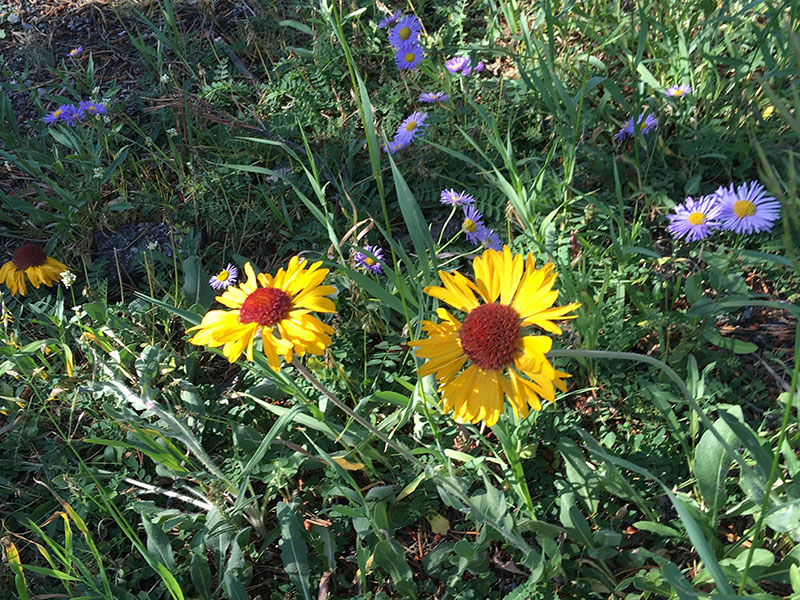Gaillardia aristata / common blanketflower
- bright red petals with yellow tips, or yellow petals the whole way
- reddish brown central disk
- attractive yellow seed balls with tufts of red hair all over
- leathery, slightly hairy leaves
Also known as: Indian blanketflower, common gaillardia, gaillardia, brown-eyed Susan
Of all the asteraceae in the Valley, this is probably the easiest to recognize, at least in its red-petaled version. Another USDA Plant of the Week, this short, sunflower-like plant is highly visible where it occurs on roadsides or in dry meadows. The petals of the ray florets are yellow or red with yellow outer parts… the red being the most notable color from any distance. The ends of the petals are partly divided into three lobes. The disk florets are reddish brown or purplish like the bases of the ray florets. After pollination, the flower heads form seed balls which are themselves attractive – yellow with tufts of red hairs – before drying to a puff of achenes.
The stems are reddish, although that really doesn’t seem to be all that noticeable unless you are actually looking for it. The leaves are rather thick and have somewhat sparse hairs (trichomes) above and below, i.e. they are slightly fuzzy.
Common blanket flower is a short-lived perennial with a taproot and can spread by seed. However, it doesn’t germinate well if the seeds get buried because they are small. It also spreads by gardener. Although it blooms in mid to late summer in the Valley, if it escapes to your garden, cutting off spent flowers (dead-heading) will lead to more flowering. If you are trying to grow plants without much watering, this is a good choice. Or, if you live right down in the Valley, they also do well in rocky, nutrient-poor soil.
| Color | |
|---|---|
| Family | |
| Blossom size | |
| Inflorescence size | |
| Inflorescence type | |
| When? | |
| Where? |



